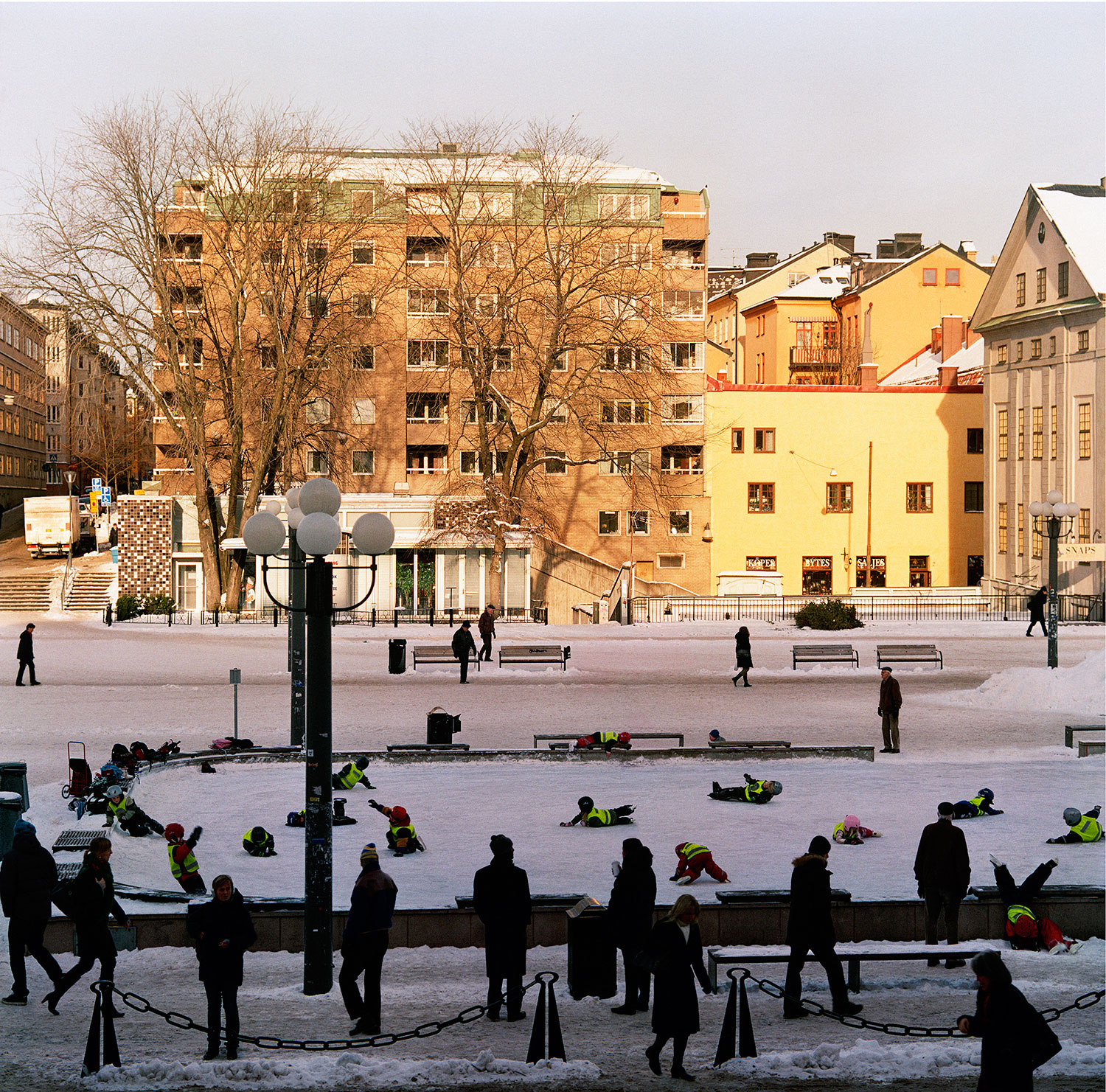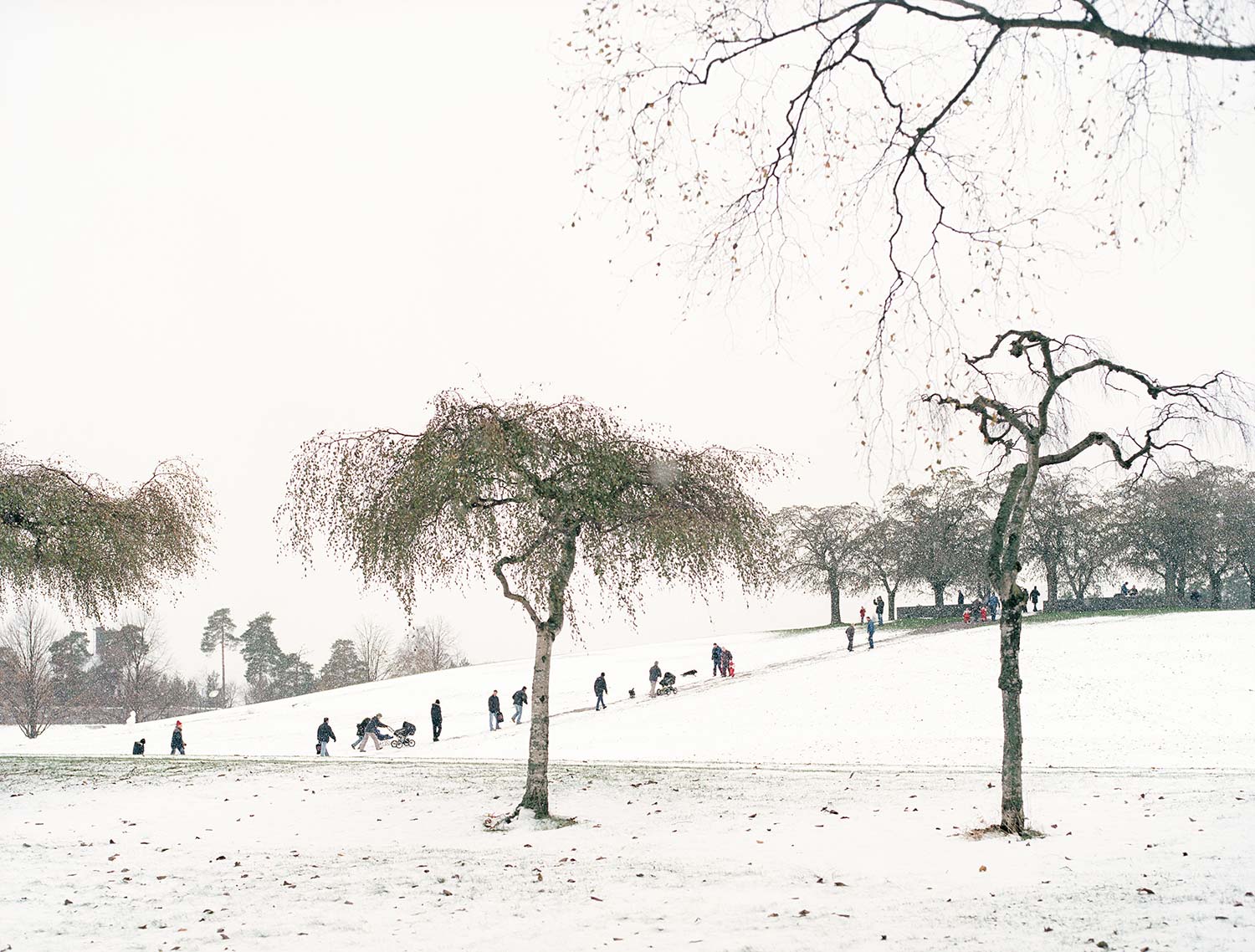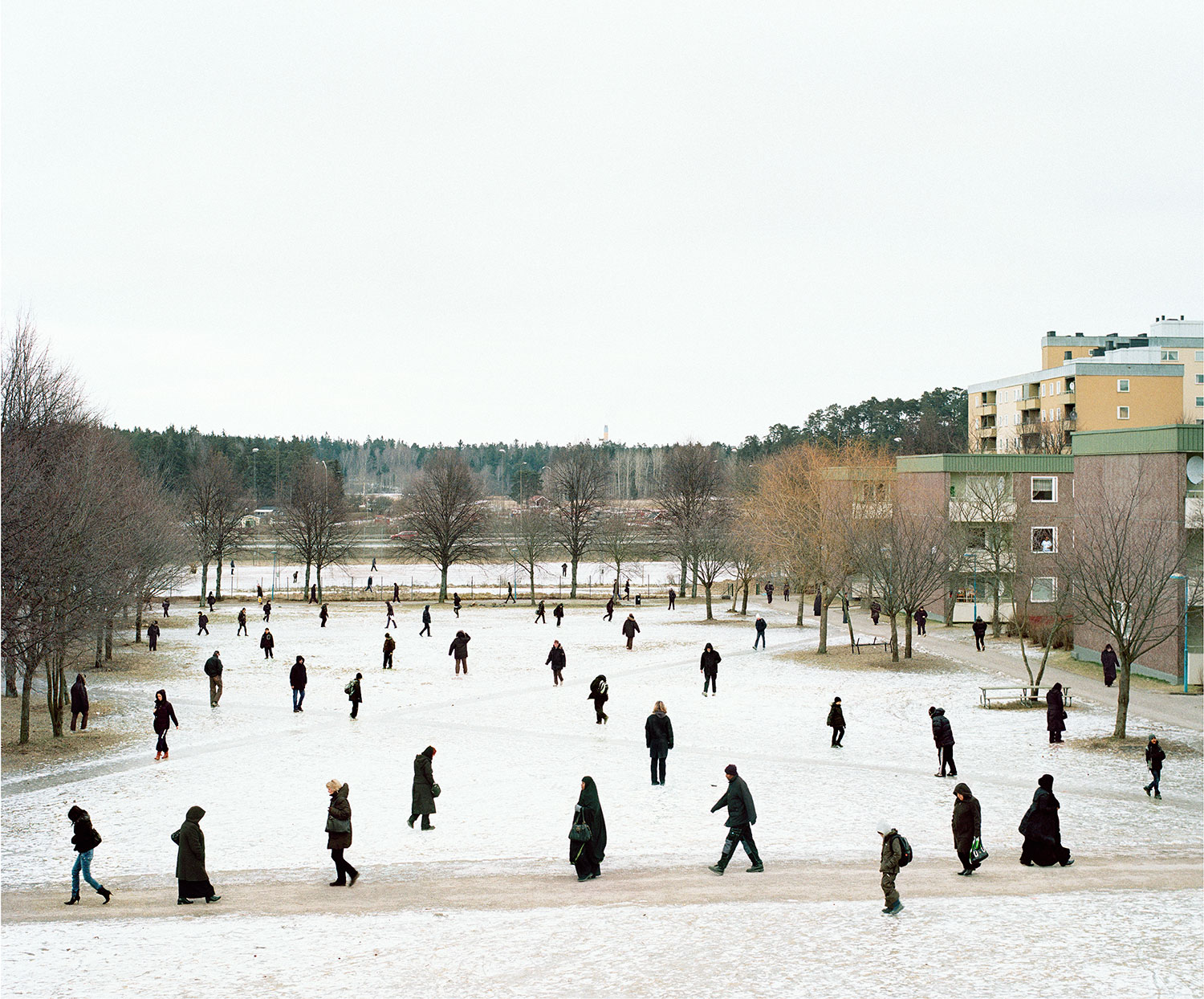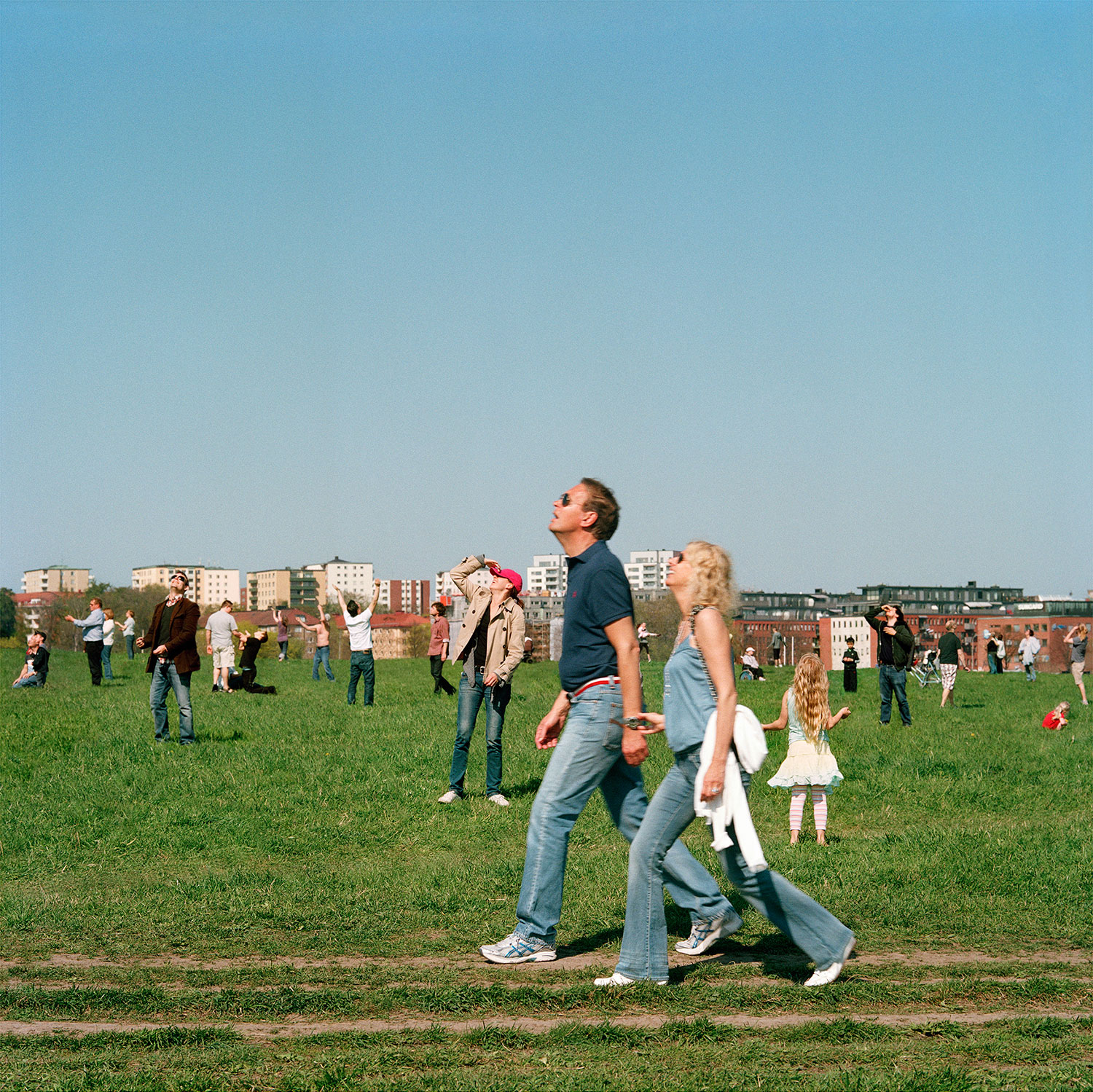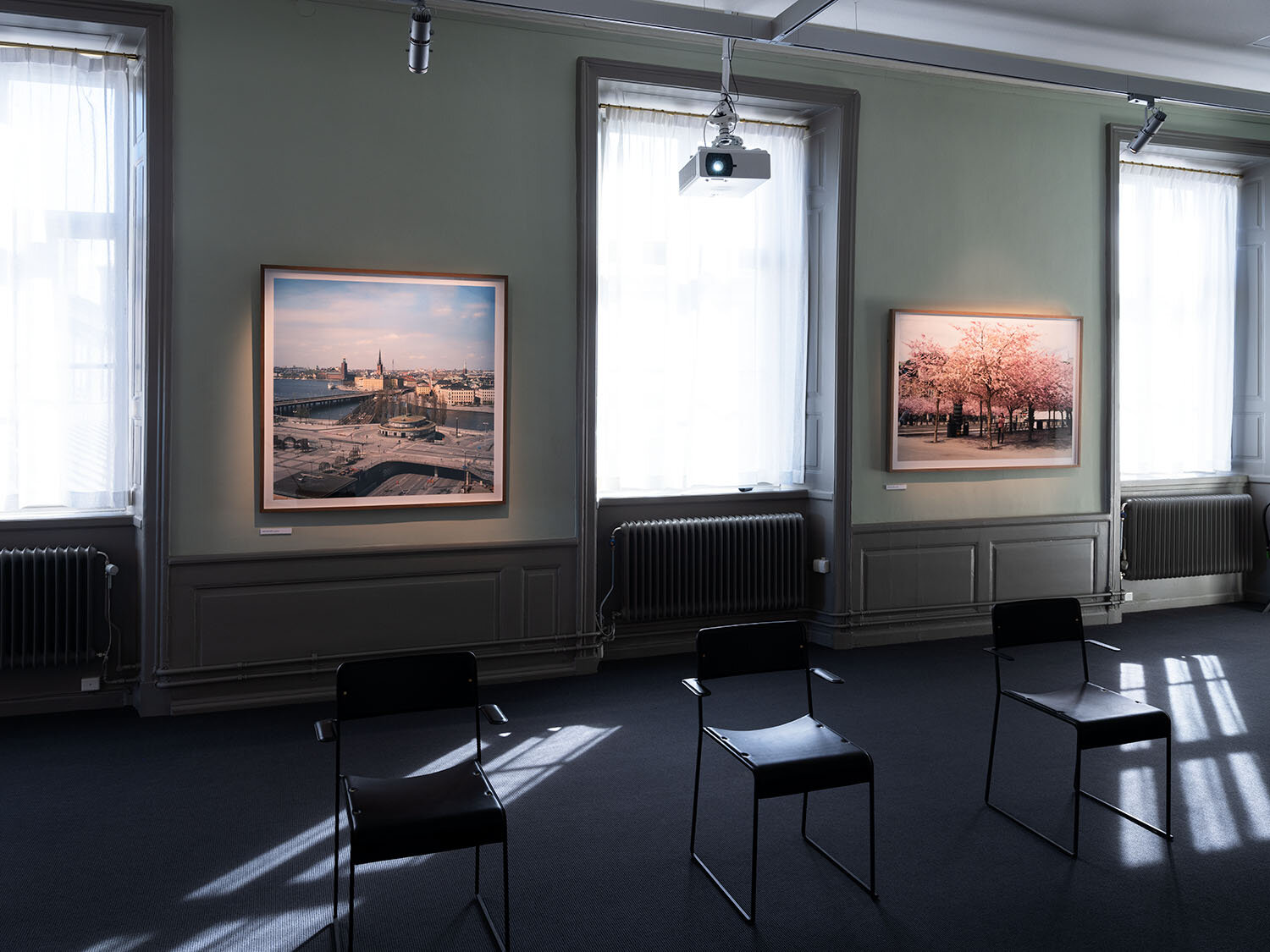Still Films
Still Films was shown for the first time at Galleri Magnus Karlsson in Stockholm spring 2008. I’ve been, with my camera on a tripod, photographing the same scene many times under a longer period of time. Later I’ve been using a computer to put different parts of the pictures together to a new picture that places itself somewhere between documentary and staged photography.
Something Like Dignity
Text from Still Films catalog, Galleri Magnus Karlsson 2008
We have perhaps reached that phase of familiarity with photography that its effects have once again become transparent to us. Having departed the primitive or literalist stage, wondering agog at its decisive moments and freakish essentializations, we have just recently moved past the similarly crude hand-wringing over its plasticity. We are now possibly able to accept photography’s promiscuity as a given, as obvious and so not a better subject of the process, which in fact it never was. What we have thankfully gained at the price of exhaustion is a state of ready disillusion, one that allows for thinking about wider implications.
The understanding is reflexive then, that if the mode of photographic observation in Ulf Lundin’s work is not wholly faked, it is always interfered with, and that further, the interference is its incidental aspect, rather than its defining one. The methods by which he manipulates the already ambiguous passivity and automation of the medium varies in each of his projects, because he is not attempting any specific analysis. A nimbler articulation of his photographs would not be as Formalist critique, but as a modeled instantiation of absurd consciousness—one perpetually caught between the desire for wholeness in life, emblematically evoked by pictorial coherence, and the knowledge of how unlikely it is that such a state of grace can ever be.
The tableaux of his latest series, whether public plaza lovefest or childhood skating rink catastrophe, each take on equal dimensions of ecstasy and humiliation. Though inconceivable, they are also recognizable as subconscious projections, even banal. Lundin is able to explode your internal sense of longing by providing it with a consummation perversely surplus to anything like satisfaction. This is what you want, this is what you get.
At their best, the images function as more than illustration by way of metaphor, but rather as a hermetic space of activity—of his making first, of our viewing second, and of conjoined reflection ultimately—that expands the life it exists within. Fractured as that space inevitably is, it also amounts to a workable form of dignity: cleared of any remaining tissue of mystification, photographs can provide the individual with a valid means for reckoning, which in Lundin’s anxious mind is an undertaking always fraught with comedy and pathos.
Visitors to a cemetery, each searching for a plot designated as personal in a landscape overpopulated with others like them, must know that they will secure it only at the time of their own final mortification. Impassive snow falls, will always.
Gil Blank

